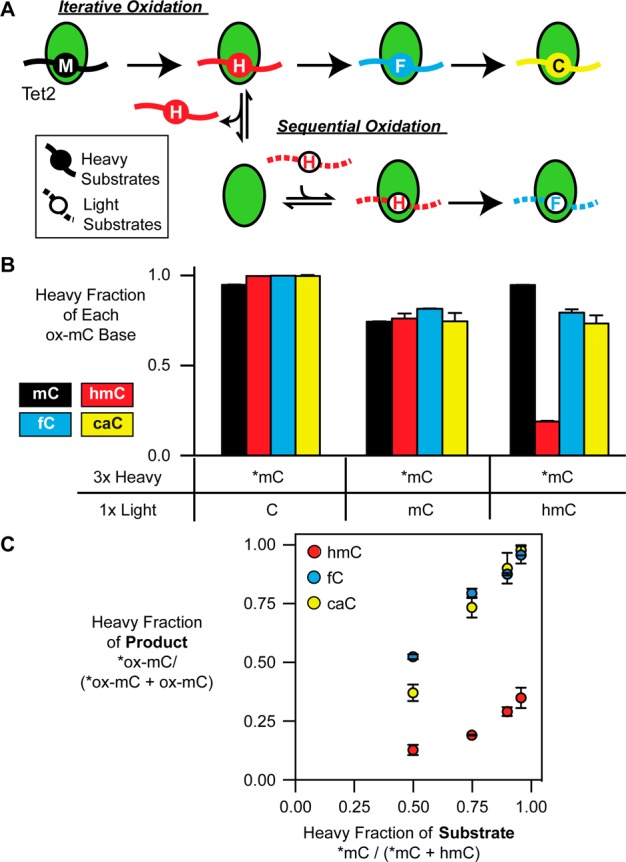Figure 3.

fC and caC are formed from iterative oxidation of mC without release of hmC. (A) Iterative versus sequential oxidation models. Tet2 is shown in green, heavy substrates as filled circles, and light as open circles with dotted lines. Tet2 complexed with heavy *mC-containing DNA can directly proceed to heavy fC and caC by iterative oxidation. In sequential oxidation, release of heavy hmC would result in mixing in solution with light hmC, generating predominantly light fC and caC. (B) 5 μg/mL Tet2 was incubated for 10 min with heavy *mCpG-containing duplexes mixed in a 3:1 ratio with light CpG-, mCpG-, or hmCpG-containing duplexes (100 nM total). Shown is the fraction of heavy isotope for each modification, as analyzed by LC-MS/MS. (C) Under similar conditions, Tet2 was incubated with varying ratios of *mC-containing DNA to light hmC-containing DNA. Shown is the heavy fraction of products, compared to the heavy fraction of substrate. The mean and SD are shown from triplicate experiments.
